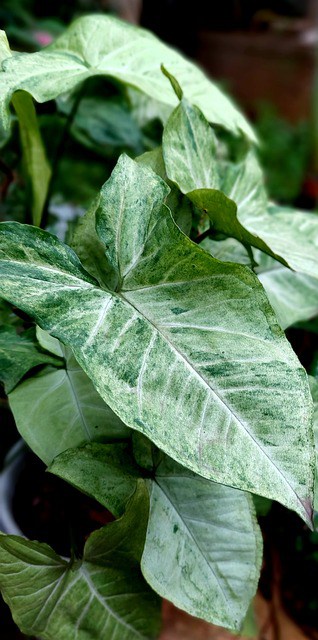Looking for a way to add some greenery to your home without needing a lot of light? Check out our list of the best indoor hanging plants for low light conditions! From ferns to spider plants, these beauties are sure to thrive in even the darkest corners. So get ready to green up your space with our top picks!…
Heartleaf Philodendron (Philodendron hederaceum)

With its glossy green leaves and vining habit, the heartleaf philodendron is a classic choice for an indoor hanging plant. It’s also one of the easiest plants to care for, making it a great choice for beginners or anyone who doesn’t have a lot of time to devote to plant care. Heartleaf philodendrons prefer indirect sunlight but can tolerate lower light levels, making them ideal for rooms that don’t get a lot of natural light. Just be sure to water them regularly and allow the soil to dry out between waterings.
Devil’s Ivy (Epipremnum aureum)

Also known as pothos or golden pothos, devil’s ivy is another popular indoor hanging plant. It’s easy to care for and does well in low-light conditions, making it a great choice for rooms that don’t get a lot of natural light. Devil’s ivy can tolerate neglect better than most other plants, so if you’re worried about forgetting to water it, this might be the plant for you. Just be sure to give it a good drink when the soil starts to dry out.
Adanson’s Monstera (Monstera adansonii)

If you’re looking for an indoor hanging plant with some personality, Adanson’s monstera is a great choice. Also known as Swiss cheese plant or hurricane plant, this tropical plant is easily recognizable by its large, glossy leaves with distinctive holes or “lacunae.” Adanson’s monsteras prefer bright, indirect sunlight but can tolerate lower light levels. They also like to be on the drier side, so allow the soil to dry out between waterings.
English Ivy (Hedera helix)

If you’re looking for a plant that will add a touch of elegance to your home, look no further than English ivy. This classic plant is perfect for hanging baskets or trailing over shelves and tables. And the best part? It’s surprisingly easy to care for. English ivy prefers low to moderate light but can tolerate some direct sunlight. Water it when the soil feels dry to the touch and fertilize it once a month during the growing season.
String of Coins (Peperomia pepperspot)

With its round, green leaves and trailing stems, string of coins is a great option if you’re looking for an eye-catching plant to brighten up your space. This plant is native to South America and thrives in humid conditions—so if you live in a dry climate, this might be the plant for you! String of coins prefers moderate to bright indirect light but can tolerate low light as well. Allow the top inch of soil to dry out before watering and fertilize once every two months during the growing season.
Spider Plant (Chlorophytum comosum)

Spider plants are one of the most popular houseplants for good reason—they’re practically impossible to kill! These hardy plants can tolerate just about any type of light, from low light to direct sunlight. They’re also great at purifying indoor air, so they’re perfect for homes or offices where air quality is an issue. Spider plants like to dry out completely between watering, so wait until the soil is bone-dry before giving it a drink. Fertilize monthly during the growing season and prune as needed to keep it looking its best.
Trailing Jade Plant (Peperomia rotundifolia)

Also known as the baby rubber plant, the trailing jade plant is a member of the peperomia family. It’s a hardy plant that can tolerate long periods of drought and can even survive in low light conditions. The leaves are small and oval-shaped with a glossy surface, and the stems are thin and delicate. The plant produces small white flowers, but they are rarely seen indoors. When grown as a houseplant, the trailing jade plant will reach a maximum height of 12 inches.
Grape Ivy (Cissus rhombifolia)

A fast-growing climber, grape ivy is an easy plant to care for and is tolerant of both low light and high humidity. It gets its name from its leaves, which are shaped like grapes. The leaves are dark green with purple veins and have a leathery texture. Grape ivy can reach up to 20 feet in length, so it’s best suited for growing on a trellis or other support structure.
Arrowhead Vine (Syngonium podophyllum)

The arrowhead vine gets its name from its arrow-shaped leaves, which are dark green with white or cream-colored veins. The vines can grow up to 20 feet in length, making it a good choice for growing on a trellis or climbing frame. Arrowhead vines are tolerant of low light conditions but prefer bright indirect light. They should be allowed to dry out between waterings.
Watermelon Peperomia (Peperomia argyreia)

The watermelon peperomia is a beautiful plant with heart-shaped leaves that are variegated with white and green. This plant is very easy to care for and does not require much light or water to survive. It is the perfect plant for someone who wants to add a splash of color to their home but does not want the hassle of caring for a high maintenance plant.
Bird’s nest fern (Asplenium nidus)

The bird’s nest fern gets its name from its nest-like rosette of dark green leaves. This plant is native to tropical forests and does not require much light or water to survive. It is the perfect plant for someone who wants to add a touch of the tropics to their home without having to worry about it dying if they forget to water it.
Boston fern (Nephrolepis exaltata)

The Boston fern is a classic houseplant that has been around for many years. It is a hardy plant that does not require much light or water to survive. It is the perfect plant for someone who wants to add some greenery to their home but does not want the hassle of caring for a high maintenance plant.
Chinese Evergreen (Aglaonema modestum)

The Chinese evergreen plant is another great option for those looking for an easy-to-care-for plant that does well in low light conditions. These plants are known for their ability to purify the air, so they’re a great choice if you’re looking to improve the air quality in your home. Chinese evergreen plants do best in bright, indirect light, but they can also tolerate low light conditions. Just be sure to water them regularly and keep an eye out for mealybugs, which can be a problem for these plants.
Monstera (Monstera deliciosa)

Monstera plants are a bit more finicky than the other two plants on this list, but they are definitely worth the effort! These beautiful plants are known for their large leaves and unique flower clusters. Monstera plants do best in bright, indirect light, but they can also tolerate low light conditions. Just be sure to water them regularly and keep an eye out for root rot, which can be a problem for these plants.
Peperomia (Peperomia caperata)

Peperomias are a great option for those with low light conditions in their home, as they only need indirect sunlight to flourish. Peperomias are also relatively low-maintenance, which makes them ideal for busy homeowners or those who are new to plant care. Plus, they come in a wide variety of colors and sizes, so you’re sure to find one that fits your style.
Wax Plant (Hoya)

Wax plants are another great option for those with low light conditions, as they only need indirect sunlight to thrive. Wax plants are also relatively easy to care for and come in a variety of colors and sizes. One thing to keep in mind with wax plants, however, is that they can be poisonous if ingested, so be sure to keep them out of reach of small children and pets.
ZZ Plant

ZZ plants are a great option for those with low light conditions because they can tolerate almost any type of light except direct sunlight. ZZ plants are also very easy to care for and come in a variety of colors and sizes. One thing to keep in mind with ZZ plants is that they can be poisonous if ingested, so be sure to keep them out of reach of small children and pets.




